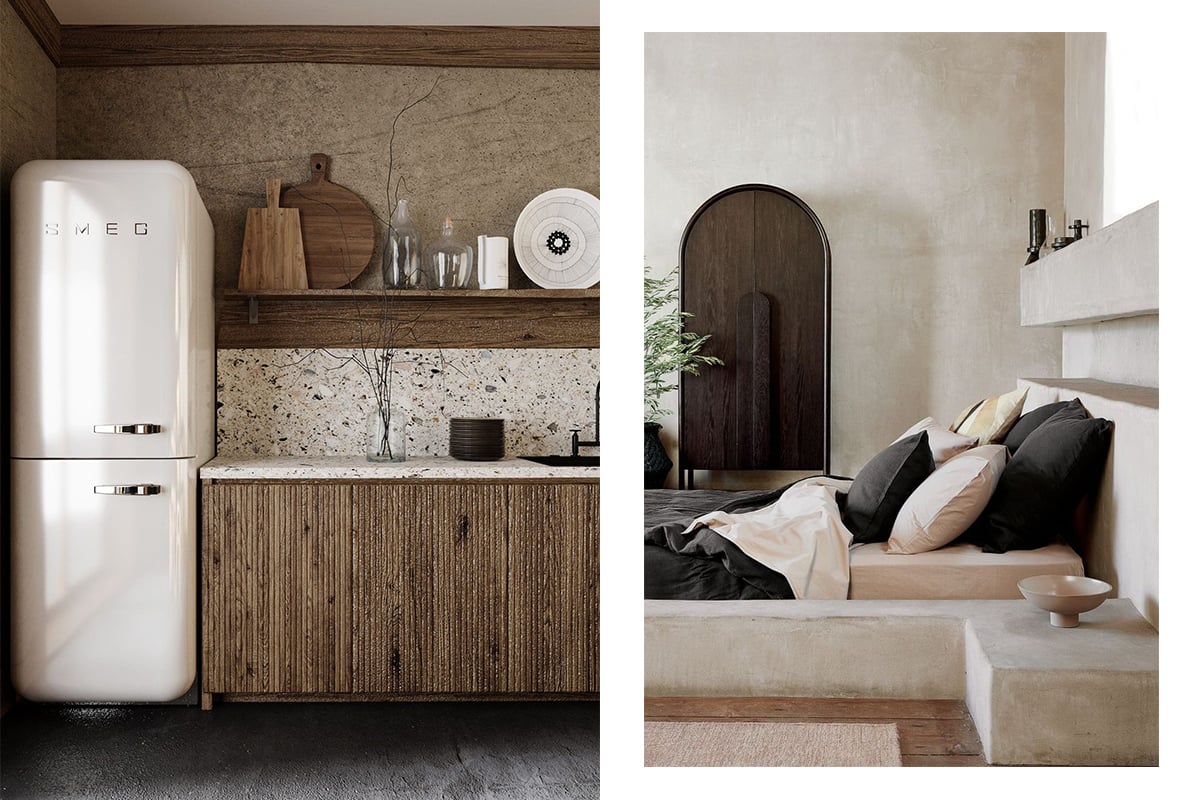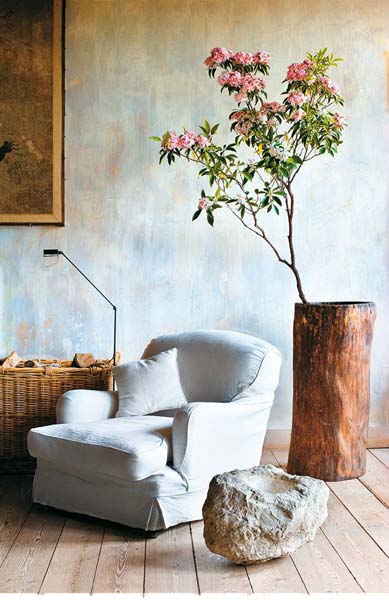
If you have been keeping up with the interior design trends of Instagram, you will have surely gotten lost in the 'way of life' aesthetic that is Wabi-sabi. The ancient Japanese philosophy is much more than a fleeting design phase; Instead, its principles act as a reminder to appreciate the beauty in a naturally imperfect world.
As written by prolific American artist, aesthetics expert and writer, Leonard Koren, in his book Wabi-Sabi: For Artists, Designers, Poets & Philosophers: "Wabi-sabi is ambivalent about separating beauty from non-beauty or ugliness. The beauty of Wabi-sabi is in one respect, the condition of coming to terms with what you consider ugly."
With this in mind, it might be time for us to move away from the plague of perfectionism that has riddled our homes and embrace an approach that is far more simplistic. Here, we unpack how.
What is Wabi-sabi?
It is difficult to deduce Wabi-sabi to a single definition. Loosely translated, the philosophy can be understood as 'rustic simplicity' or 'understated elegance' with a focus on a less-is-more mentality. Even Koren struggled to discover a precise definition; instead coining his own, which reads as follows. "Wabi-sabi is the beauty of things imperfect, impermanent, and incomplete, the antithesis of our classical Western notion of beauty as something perfect, enduring, and monumental."

Image credit: Pinterest
The Japanese philosophy offers an escape from reality's modern obsession with perfectionism, instead, embracing imperfections in a more meaningful way. Although it certainly encourages a shift to simplicity, this notion in itself can be double-edged; given that the term in western culture is often associated with hyper-organisation. Rather, Wabi-sabi is more about looking to nature as our main inspiration and the characteristics it possesses.
Authenticity is also a key principle in the practice and as a result, cracks and blemishes are considered symbolic of the passage of time and loving use. This works in tandem with a similar Japanese art form – kinstugi. This is the practice of repairing cracked pottery and ceramics with gold-dusted lacquer to highlight the beauty of the damage rather than hiding it.
What are the seven pillars of Wabi-sabi?

Image credit: Pinterest
A quick Google search will reveal that Wabi-sabi finds its roots in Zen Buddhism. The path to enlightenment for Zen monks stresses austerity, communion with nature, and above all, reverence for everyday life. Through this philosophy, the seven pillars of Wabi-sabi were defined:
- Kanso — simplicity
- Fukinsei — asymmetry or irregularity
- Shibumi — beauty in the understated
- Shizen — naturalness without pretension
- Yugen — subtle grace
- Datsuzoku — freeness
- Seijaku — tranquility
How can you incorporate Wabi-sabi in your home?
As mentioned above, Wabi-sabi has a strong connection to nature, so embracing the rustic characteristics of raw materials like wood, steel and stone are a great place to begin structurally. Part of choosing natural materials is accepting that they will intrinsically have imperfections and no two pieces of wood, steel or stone will ever be identical. This also extends to your soft furnishings too – opting for materials and fibres of linen varieties that characteristically get better with every use and wash.

Image credit: Pinterest
When it comes to colourways, the theme of nature continues to live on. Greens, greys, earth tones and rust-shades help create an atmosphere of tranquility and harmony.
In addition, the philosophy celebrates the handmade rather than overly-manufactured pieces. When decorating your space, look to unique and quality pieces in materials that will wear well over time. It's also important to keep in mind that Wabi-sabi is about decluttering and stripping back the unnecessary. So, if you're questioning whether the extra couch cushion is necessary, maybe it's best to go without.
Image credit:



